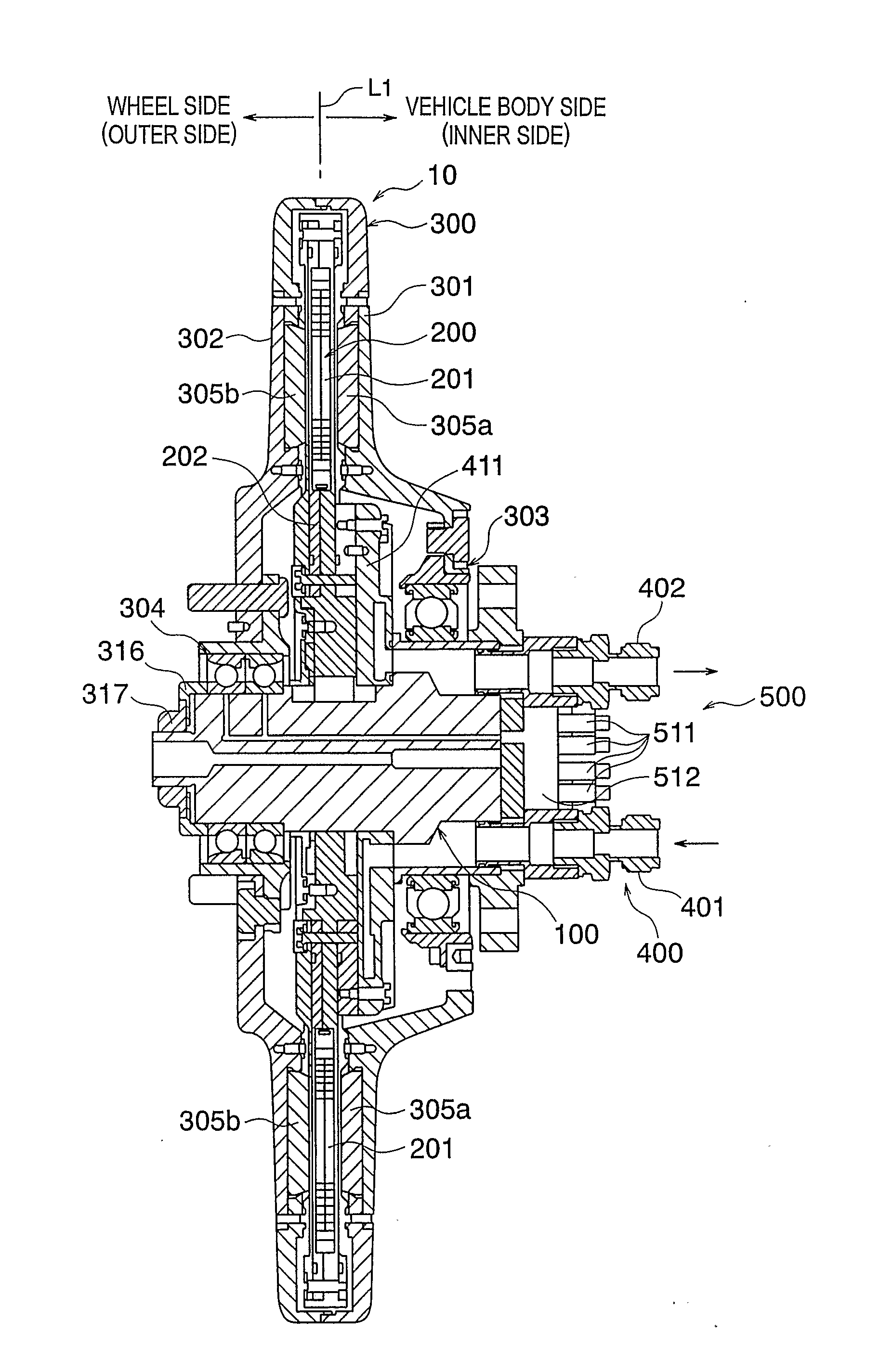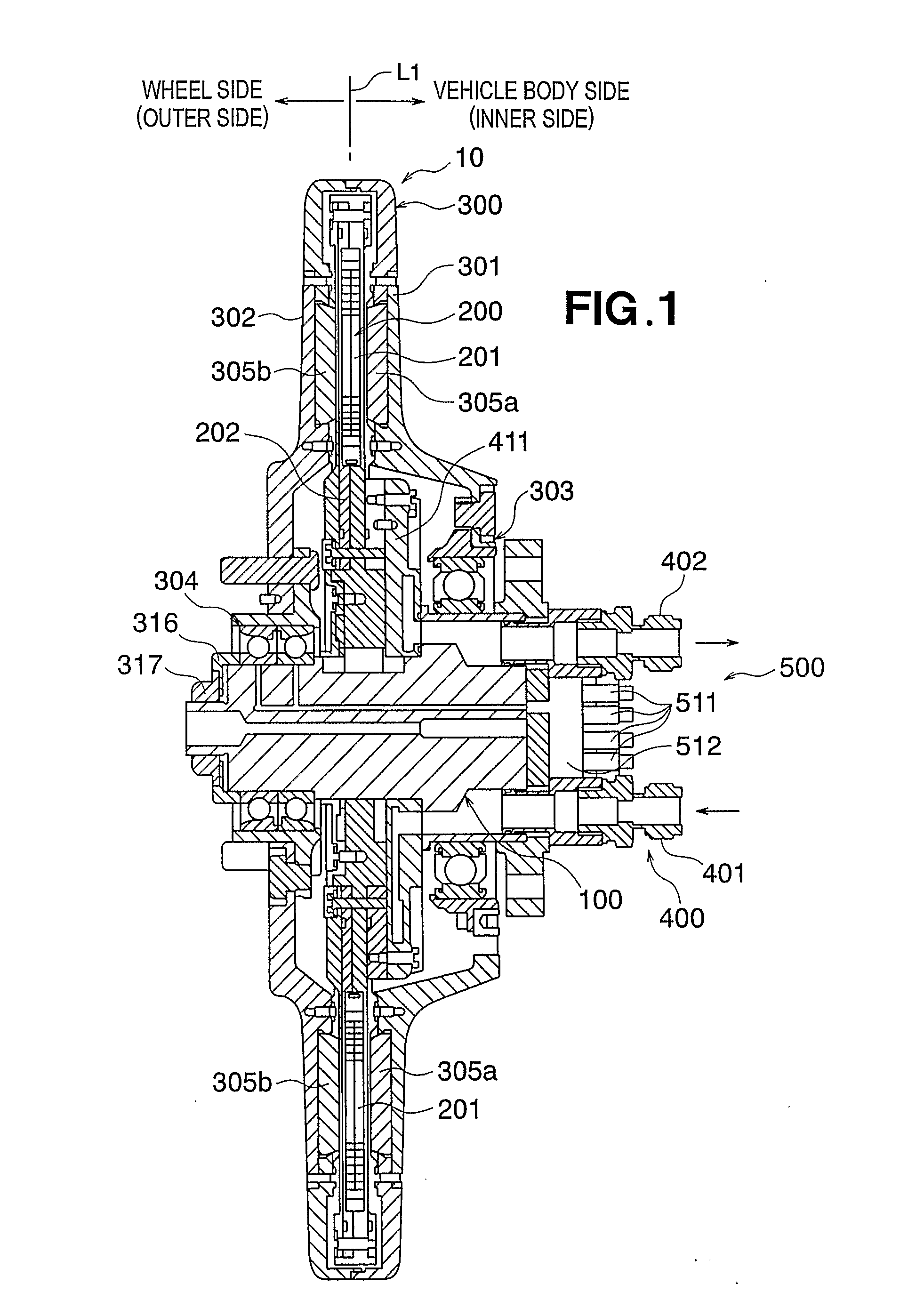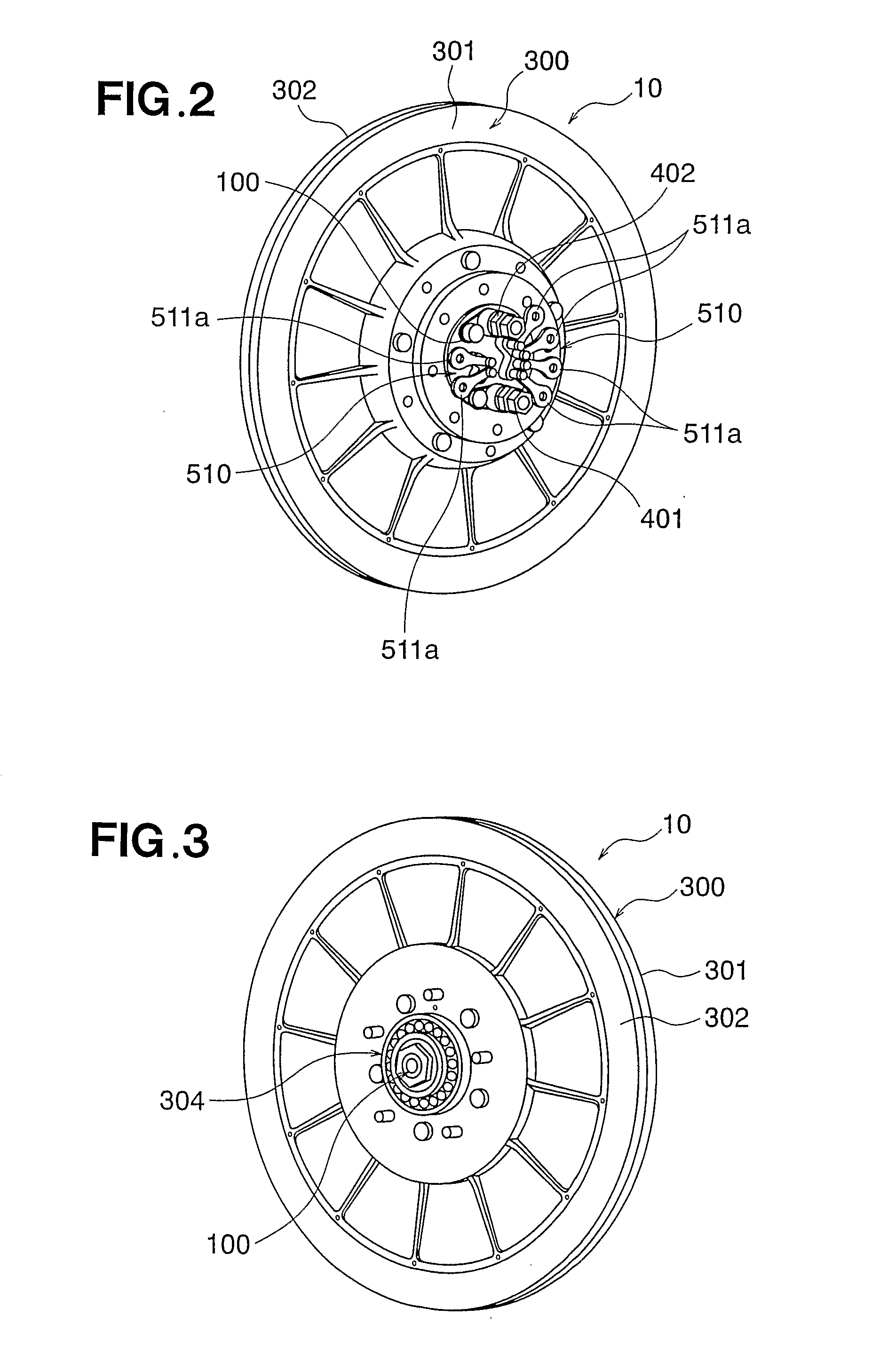Coil assembly for rotating electric machine
a technology of rotating electric machines and coils, which is applied in the direction of magnetic bodies, manufacturing stators/rotor bodies, and magnetic circuit shapes/forms/construction, etc., can solve the problems of reduced rigidity of half-coil conductors, reduced magnetic flux level or output of rotating electric machines, and reduced lamination factor of conductors, etc., to achieve a higher degree of freedom of layout, reduce the effect of bending
- Summary
- Abstract
- Description
- Claims
- Application Information
AI Technical Summary
Benefits of technology
Problems solved by technology
Method used
Image
Examples
Embodiment Construction
[0050]Certain preferred embodiments of the present invention will be described in detail below, by way of example only, with reference to the accompanying drawings.
[0051]It is possible for a coil assembly (hereafter simply called “coil”) for a rotating electric machine of the present invention to be used in both electric motors and electric generators; the description of the embodiments herein takes the example of application in an electric motor.
[0052]First, referring to FIGS. 1 through 5, the overall configuration of an exemplary axial type motor embodying the coil for a rotating electric machine of the present invention will be described. In this embodiment, the motor 10 will be shown by way of example as a rotating electric machine of in-wheel type used for driving a vehicle, accommodated entirely within the interior of each of a number of wheels with which the vehicle is equipped, and adapted to provide direct rotary driving of each of the wheels.
[0053]However, the coil for a r...
PUM
| Property | Measurement | Unit |
|---|---|---|
| depth | aaaaa | aaaaa |
| thickness D1 | aaaaa | aaaaa |
| thickness D1 | aaaaa | aaaaa |
Abstract
Description
Claims
Application Information
 Login to View More
Login to View More - R&D
- Intellectual Property
- Life Sciences
- Materials
- Tech Scout
- Unparalleled Data Quality
- Higher Quality Content
- 60% Fewer Hallucinations
Browse by: Latest US Patents, China's latest patents, Technical Efficacy Thesaurus, Application Domain, Technology Topic, Popular Technical Reports.
© 2025 PatSnap. All rights reserved.Legal|Privacy policy|Modern Slavery Act Transparency Statement|Sitemap|About US| Contact US: help@patsnap.com



